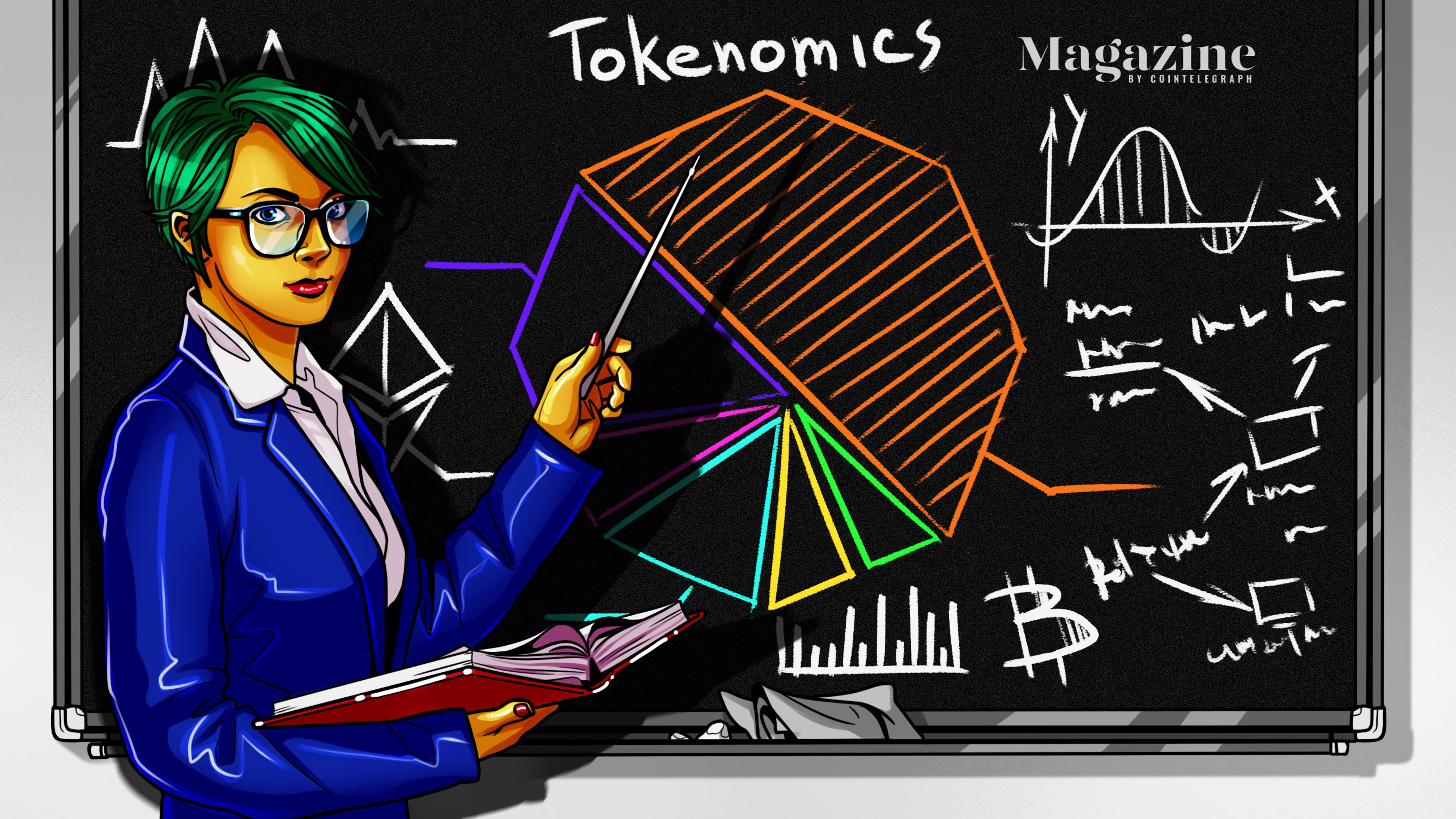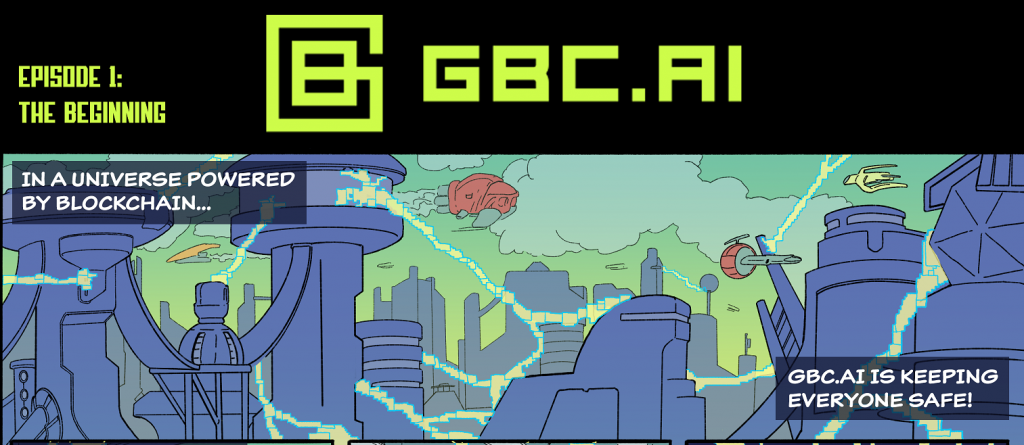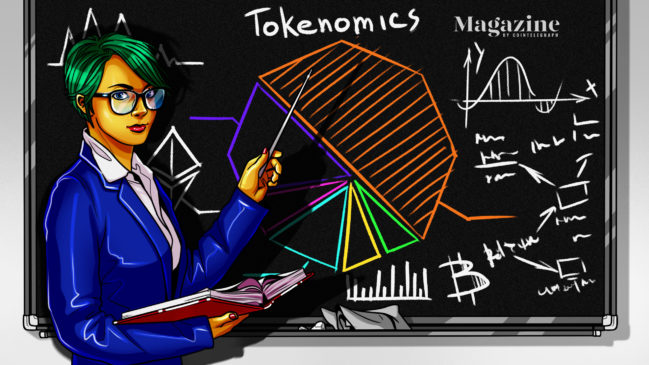Economics is the study of human behavior involving scarce resources — and the effects those behaviors have on those resources, explains Roderick McKinley.
Tokenomics in crypto is a related but different field. Tokens are a way for projects to raise funds and build communities, and designing the way they work can be much more complex than traditional equity raises — and potentially much more problematic.
“In tokenomics, the token or digital asset is the scarce resource. But we can now design features for these programmable digital assets, influencing how people behave and interact with each other, often creating new possibilities for exchange altogether,” McKinley says. He explains the distribution of tokens and the outcomes of that distribution are key matters for investors and for how the business ends up operating.
McKinley has worked on a range of different projects, including ParallelChain, GBC AI, Avarta, Fluid, ShopX, Terona and Kasta. But what is it that a tokenomics expert provides to projects?
“I typically deliver a range of services to projects. These include a design of the token’s supply alongside other economic features that make the token useful, so it attracts demand, helping clients to understand how to use the technology in ways that fit their business and, finally, how to make a compelling fundraising case,” he says.
There are two parts to every token’s value equation: supply and demand. Yet an internet search for “tokenomics” is likely to take you to colorful fan charts that only deal with the supply side of that equation: describing how a project plans to release its supply of tokens to stakeholders, over time. Making sense of how tokenomics is applied on the demand side is harder because each case is different and potentially unique.

A few examples
- Ethereum’s ETH token was designed to be the only way that users could pay miners for the computational resources supplied to run the blockchain — aka gas fees. As long as there is demand for computation to be performed on the Ethereum blockchain, a finite supply of ETH has value.
- Synthetix’s SNX token was designed to make up the collateral that backed the issuance of synthetic digital asset derivatives (tokens that follow the price movements of other known financial assets). Stakers receive SNX token rewards while the project is in the early stages, as well as all of the trading fees collected. Synthetix also popularized “yield farming” by giving users SNX rewards to provide liquidity on Curve and Uniswap. As long as there is demand for the synthetic assets that Synthetix builds, a finite supply of SNX has value.
- Helium’s HNT token is used as a reward payment paid to users who provide wireless coverage capacity to support Helium’s decentralized wireless connectivity platform, and the token is burned for every dollar fee paid by users who connect to this network. As long as there is demand to connect to this decentralized wireless network, a finite supply of HNT has value.
None of these examples describes a fully automated process. In every case, humans are making free choices in response to incentives, and that is why the consideration of human behavior is fundamental to tokenomic design.

Human behavior
But real-world facts often diverge in surprising ways from classic economic theory. For example, numerous experiments and papers point to the fact that people will not always work harder for more pay. So, how can incentives reliably work to alter people’s behavior?
“When designing tokenomics for a project that then goes live, it’s like conducting mini experiments into people’s behavior. We can learn from what people actually do instead of what theory tells us they will do,” he explains.
“We’re not into manipulation. People join these communities on a voluntary basis, and they can choose to opt in or out of the project. If the project has collectivized governance, they may be choosing these rules for themselves.”
“This is very different to what we get with something like China’s social credit system,” he adds. “This is dystopian, as there is no choice — everyone must take part whether they want to or not.”
Instead, McKinley compares behavioral change directed by tokenomics as little nudges, like putting the cookie jar out of sight when you want to eat fewer calories. “Influencing behavior does not have to be malicious,” he says. All these incentives and interactions are built from freely programmable and endlessly configurable code. That poses a dilemma of choice when the possibilities are so open-ended.
Tokenomics is one of the most important aspects of Crypto
If you don’t understand tokenomics, you’re not gonna make it.
Here’s everything you need to know about Tokenomics🧵
— Covduk (@Cov_duk) July 15, 2022
“It’s important to be clear-eyed about the value exchange that each project creates, and who the actors and beneficiaries are in that exchange because the possibilities for applications are really diverse. We may be using the code to allow people to trade honestly and transparently with each other. Or we may be using code to automate business logic and processes so that they no longer need to be done by expensive and error-prone humans.”
Once these users and the exchanges they make are defined, tokenomic design is applied to create rules that define how those exchanges take place while keeping an eye on the total token supply and the token balances held by different user groups. “All of these elements are going to interact to influence the token’s price, and that has repercussions for the ability of your token to work as an incentivizing instrument as intended,” he explains.
Ponzi-nomics and yield farming
Of course, while influencing behavior using tokens can be a noble aim, on the flip side, there can be the complaint that tokenomics often ends up being a glorified Ponzi scheme. Anya Nova with Power Ledger grapples with this concept, sharing McKinley’s views to an extent.
“Incentives are part of a business model that generates value, and that value can be defined as enabling a person to complete one of their life’s ‘to-dos’ faster, better, cheaper, or more enjoyable — similar to the way Uber allows us to catch a taxi easier.”
She points out that one of the key incentives in crypto space — i.e., staking for staking’s sake or yield farming — does not actually create any value. “I’m not talking about staking as one of the mechanisms of securing the PoS chain, but staking where you put x into a smart contract and get x+rewards sometime later, but your x actually performed no role in consensus,” says Nova.

The staking model Nova singles out is the “stake for rewards” scheme that many projects have used to lure new users to buy their token. This reward model can be economically sound when early supporters of a community contribute something more to a project by joining it in its early stages. Consider the early users of Facebook or YouTube — it was their presence and activity on these platforms that helped create early content that attracted other users and helped these platforms scale. Today, these platforms are already so large that new users no longer make this kind of special contribution when they sign up to these platforms.
The trouble is that many projects used staking rewards for projects, which never stood to benefit from those kinds of early network effects. The rewards offered were simply used as a promotional device to bring in new users. The 20% interest offered on UST deposits on Terra’s Anchor Protocol was a notable example. This incentive was launched to accelerate user adoption of UST.
The promotion was a victim of its own success and flawed design, with UST deposits growing at a much faster rate than the uses of UST in Terra’s ecosystem. These kinds of promotions are routinely and successfully used in ordinary retail marketing. But in that context, a known, defined product is being delivered to consumers at a discount. In the blockchain case, what is being delivered is a token whose value depends on long-term demand for its utilities and the token supply, which is increased by the very promotional rewards users are buying.
The net result was that these rewards — which were being paid to speculators and individuals with a genuine interest in the project — flooded markets with supply without a commensurate increase in demand for the services delivered. Once speculative tension is removed by a large market event or a shinier token elsewhere, the price collapses.
But then again, Nova wonders if everyone sees it that way and if it really matters:
“If I’m being my own devil’s advocate, then I’d say that ‘capital gains’ or selling more tokens on the market is a sort of ‘value.’ In the eyes of a crypto yield farmer or crypto trader, it’s the ultimate value, and who are we to say that it’s not? They don’t care if it’s a Ponzi or not a Ponzi — as long as they sold a token for more money than what they bought it for or same money but more tokens.”
Tokenomics is a balancing act
Tom Serres, co-founder and managing partner of Warburg Serres Investment Fund, which focuses on Web3 projects, views quality tokenomics as a balancing act.

“In every economic situation, there is supply and demand, and when supply is equal to demand, then you have perfect equilibrium. Every company should be trying to achieve perfect equilibrium from an economic principle,” says Serres.
“If there is more demand than supply, then I’ve not built in enough supply, and I’m losing out on potential revenue. Conversely, if my supply is greater, then I’ve overbuilt, and I’ve a lot of sunk costs and extra overhead.”
The concept of extracting value from open-source software is not a new one, but it was harder to do before crypto. An example might be the company called Red Hat in the United States. Red Hat consultants built software on top of Linux, which is one of the original open-source projects. Red Hat took its expertise and hawked it around to big companies, such as FedEx and Merck. “So, while the software was free, this specialized consultancy was very much not. Afterward, the company was bought by IBM for a staggering $34 billion.”
“But what if you could have tokenized Linux, and so rather than charging a consultancy fee, you add more features, and the software paid out in return? That was, the token is incentivizing good behavior.”
Getting into the weeds
McKinley has worked with more than 20 projects over the past two years. He references ParallelChain, a new layer-1 blockchain smart contract development platform. The founders wanted to design incentives that would sustainably reward behaviors and actions to secure the state of the ledger.
“I couldn’t just copy other layer-1 designs because ParallelChain has a consensus process that is unique, with three tiers of authority. The three groups remain decentralized through balanced voting powers. I had to take an approach which took those objectives into account and design a reward system that always offers increasing rewards to smaller nodes as they grow to rebalance governance towards the desired state, and caps rewards that are paid to nodes once they reach a certain size, forcing that node’s rewards to be spread more thinly if they grow any further.”
Other examples include GBC.AI, which is creating a whole suite of products and services for the blockchain space using machine learning and AI. The team wanted to fundraise using a token sale, so McKinley worked closely to understand the core capabilities of the team and its technology to come up with a broad array of products that could be accessed using the project’s utility token, which would provide demand for it. McKinley also structured their revenues to be denominated in a stablecoin in order to decrease the project’s reliance on using its own token to fund ongoing expenses.

“But then, I still link this key business driver back to the scarcity of the project’s utility token by using a policy mechanism to commit a share of stablecoin revenues collected to buy back and burn the project tokens,” he says.
Another project he worked on is Iconic, an NFT marketplace and social platform that serves esports and gaming communities. The team had just completed its core product: allowing users to record their gameplay, publish it and mint it as an NFT from within their gaming console.
“In this project, I needed to think about the end users, the gamers who have a very specific profile. I asked myself relevant questions about what these users wanted, what they needed, and what would get them excited. Ultimately, I could see a great opportunity to build out the token utilities in a social direction that would allow the gamers to support their favorite esports star or content creator,” he says.
“One experience designed to support this is a recurring lottery event that allows users to vote for their new favorite new content using the native utility token. The content with the most support wins and gets showcased on the platform, and all the backing supporters receive the total token contributions made to the lottery reward pool.”
Love it and list it
Once the tokenomics has been designed and the capital has been successfully raised, the next step is to list the token on an exchange. The benefits of following a “token sale plus listing” approach to fundraising over an early-stage equity sale are the speed and lower costs it offers projects, regardless of market conditions.
The downside can be that there is an expectation of early returns, which puts sell pressure on the project token and interferes with the project’s success. This was the opinion of many observers as to what precipitated the enormous 95% crash visited on the high-profile initial listing of Internet Computer’s ICP token in 2021.
“At the moment, I don’t think there is enough patience in general. People want to get returns very fast when building a new business still takes a long time. I do not take that to be a critical fault with the token sale mechanism,” he says.
“Rather, I think we will see terms and controls for token sales evolve in ways that retain some of their attractive advantages over equity fundraising while better aligning investors’ actions and expectations with the project user community and the realities of growing a startup.”
Keep it simple but not stupid
Maarten Ectors, commercial director with Pollen DeFi, a DeFi 2.0 platform, feels the secret of tokenomics is to keep it simple, and he sees utility as key.
Pollen’s tokenomics operate in a pragmatic utility fashion.

“Pollenators” (users of the site) create virtual portfolios and stake the PLN token each time they rebalance. Pollenators can also delegate PLN into following the top Pollenator’s virtual portfolios to benefit from any appreciation, while the creator of the trading strategies gets 20% of the profits.
There’s also a governance token called vePLN given to long-term stakers, which boosts rewards by 20%.
“It’s about bringing utility to the project and to the utility influencing the token’s value. That’s where it all boils down to. Because too many projects talk up their token’s value, a lot of marketing money is spent,” he says.
“Really, it should only be about, like — Are any of us actually using it? And if ’re using it, does that really bring win-win situations? So, it’s all about finding those types of things. You can do a lot of maths; you can do a lot of modeling and so on. But it’s all about the use, the utility,” says Ectors.
Nearly a new stablecoin
There are also times when tokenomics is used to incentivize behavior to generate a whole new token. In the aftermath of the collapse of UST, algorithmic stablecoins have come under the microscope, but it hasn’t dampened the ardor other layer-1 platforms have for stable assets. Many of the layer-1 protocols are now looking at creating stablecoins, each with its own tokenomic design.
Scalable Ethereum smart contract platform Telos is doing stealth work looking at a new native stablecoin, Force. Meanwhile, Near Protocol, a layer-1 competitor to Ethereum that’s looking to be the fastest blockchain on the block, is also gearing up work on its native stablecoin, USN. Mark Sugden, formerly of the Near foundation, is helping with growth. He tells Cointelegraph that he reckons this is the way forward for all layer 1s:
“Near Protocol has a vision of becoming a trillion-dollar ecosystem with applications, protocols, marketplaces, etc. all built on top. And the Near token is simply designed to be the transfer or value mechanism for the gas — for paying for transactions on the network,” says Sugden.
“In many ways, the Near token is not a good medium of exchange, as it’s too volatile, so in the future, we’ll need something to transfer value across the ecosystem that is maintained or pegged to something we know like the dollar.”

Sugden says that rather than work on an expensive integration of USDT or USDC, it’s better to leverage the skills of participants in the ecosystem to put together a stable native coin. “And it’ll be better than an EVM copy,” he says. Sugden is part of an independent team called Decentral Bank (DCB), which is a DAO set up to organize the stablecoin.
He explains that USN is over-collateralized, “It’s basically wrapped Tether on a one-to-one basis. When you mint USN with USDT, the reserve fund is made up of Tether so that if anyone wants to redeem their USN they will always get USDT.” In order to mint USN, you need USDT.
USN has a 1:1 relationship with USDT. No Near tokens are involved in the minting process. USN holders are then eligible for yield provided by the rewards of the staked Near that the DCB has in its reserves. The DCB holds a reserve of Near tokens, from when the protocol required Near to mint USN, which is no longer the case. Sugden says being over-collateralized and avoiding unsustainable yield help to avoid the clear issues with the design of the failed Terra UST project.
“First of all, the infinite supply for UST created a false economy with regards to the market cap, and then some 80% of the coin was locked in Anchor and getting huge and unsustainable yield. Stablecoins are made to be used not to be staked for an unsustainable APR in what turned out to be a kind of Ponzi scheme.”
Sugden also explains that the decision to peg USN to USDT is aligned to the bear market and does not rule out changing monetary policy in the future by adding in future assets. He says building in use cases into a thriving ecosystem is key and that tokenomics without them are just hollow.
“We did our soft launch at the same time that UST collapsed, which taught us some lessons — and also highlighted core differences — not least the fact that we have already a strong ecosystem and the stablecoin is coming later — not the other way around. It’s transparent, run by the DAO, and, if God forbid, it hits a crisis, the Near ecosystem will keep on chugging along.”
USN will incentivize holders by taking advantage of the Near proof-of-stake ecosystem. The validation rewards from participating in that ecosystem will be distributed to holders of the USN coin, taking advantage of the Near consensus mechanism, while affording optionality to the stablecoin holders. It’s not simple, but maybe the trials and tribulations of algo stablecoins will help foster more robust solutions going forward.



